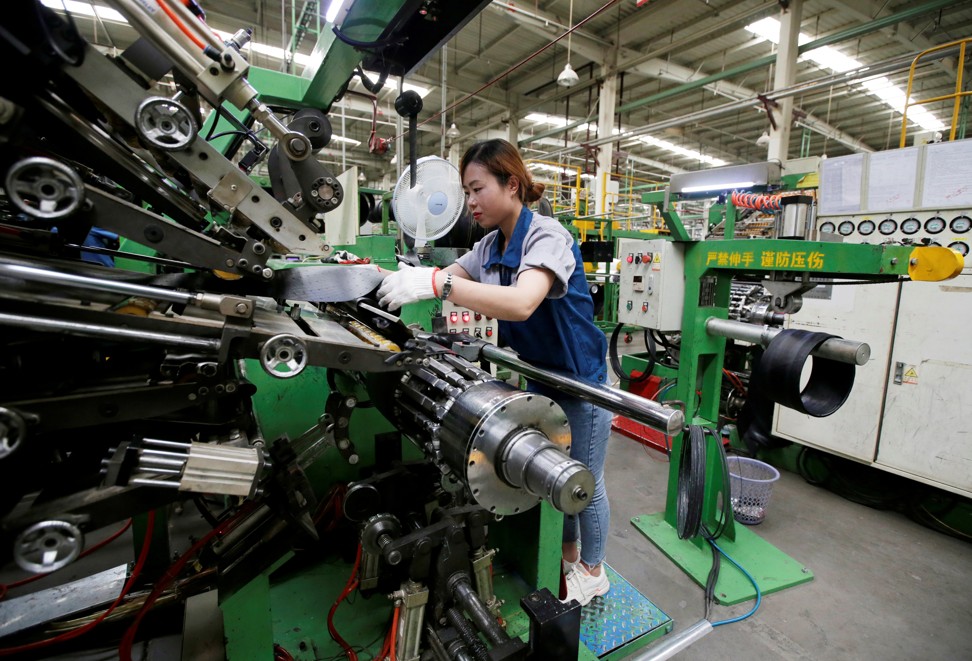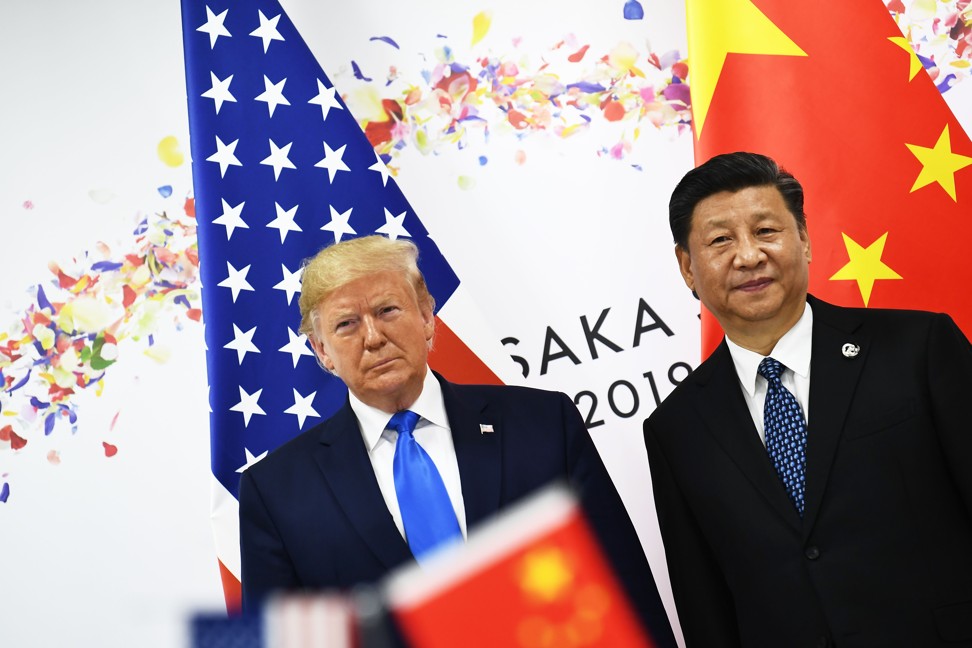
China economy: ‘worst is yet to come’ with trade war tariffs likely to escalate, Nomura economists say
- Chinese gross domestic product to increase by 6.1 per cent in the second quarter and only 6.0 per cent over the second half of the year
- High debt levels restrict Beijing’s room to manoeuvre on monetary easing, with better-than-expected first quarter growth proving ‘illusory’

For China’s economy, already bruised from the trade war with the United States and a series of sluggish data, “the worst is yet to come” in the second half of this year, Nomura analysts have warned.
Headwinds continue to mount, including lingering uncertainties over trade tensions with the US, and the possibility of further US tariffs. Beijing’s scope for policy easing in response is limited, economists from the Japanese bank said at a press conference in Hong Kong on Tuesday.
The economists, led by Lu Ting, said that the better-than-expected 6.4 per cent growth in China’s economy in the first quarter, was a blip that “proved to be illusory”. They expect Chinese gross domestic product (GDP) to increase by 6.1 per cent in the second quarter and only 6.0 per cent over the second half of the year.
The January-to-March period was driven by record-high exports, in part because Chinese and American companies sought to “front-load” the shipment of goods to avoid higher tariffs threatened by the US.

“I don’t think China is anywhere close to a big financial crisis, but the room for policy easing is getting smaller,” Lu said. He warned that if China expands fiscal policy further and allows local governments to borrow more, it would significantly boost the size of the nation’s debt, which, in turn, would put downward pressure on the yuan’s exchange rate.
A better picture of how the Chinese economy fared in the second quarter will be available next Monday, when second-quarter GDP data, as well figures for industrial production, retail sales and fixed-asset investment will be released.
After discussions with China’s Xi Jinping at the G20 summit in Osaka last month, US President Donald Trump agreed to delay additional tariffs of up to 25 per cent on about US$300 billion worth of Chinese goods, as well as promising to ease restrictions on US companies selling equipment and components to Chinese telecoms giant Huawei.
Despite the “ceasefire”, those moves seem to have resulted in more confusion than confidence among investors.
Nomura remains pessimistic about the potential for a near-term deal to end the trade war, predicting that Washington was likely to go ahead and levy 25 per cent tariffs on nearly all remaining goods imported from China by the end of the year.
The economists said if a deal was reached, the country’s growth would stabilise but rise only modestly to 6.3 per cent for the year, given that Beijing is not keen to step up stimulus measures to boost the economy because of worries about debt.
But if a deal does not happen and tensions escalate further, China’s GDP growth would slow because of a decline in exports and lower investment in manufacturing. Under such a scenario, growth could slow to 6.1 per cent this year from last year’s 6.6 per cent, and further weaken to 5.8 per cent in 2020.
Manufacturing investment, particularly from the private sector, is a major contributor to the country’s economy. But as the trade war bites, many Chinese manufacturers are considering moving their factories out of the country to avoid US tariffs. From January to May, the growth rate of fixed asset investment in the manufacturing sector plunged to 2.7 per cent from 9.5 per cent during the same period last year.
“In the second half [of 2019], China will face even more uncertainties related to the US-China trade war, Beijing’s stance on property markets, and on the size of stimulus,” Nomura said in its report on Tuesday.

If the trade war does escalate further this year, Beijing could offer some further fiscal support to boost infrastructure investment and consumption, as well as ease property market regulations.
However, Beijing’s room for manoeuvre is constrained by a number of factors, including surging debt, low returns on investment and a falling current account surplus due to the slowdown in exports, according to Nomura.
“I expect the Chinese government to step up policy easing, especially with the escalation of the trade war,” Lu said. “It is contingent on US-China trade tensions, but most likely, whether there is escalation, the Chinese government would still need to ramp up stimulus. If the trade war continues, of course, there will be more stimulus. If there is a deal, then there will be no big stimulus.”
All eyes will be on this month’s meeting of the Politburo, the nation’s top policymaking body. During the quarterly meeting, China’s top leadership discusses the state of the economy and decides on policy signals. This month’s meeting is expected to take place after July 15.
Larry Hu, chief China economist for Macquarie Group, said he did not think Beijing would announce a major new stimulus programme after this month’s meeting because the economy has not reached a point considered bad enough for serious measures to be taken.
“The economy remains under a broad deceleration trend for now,” he said. “Data are bad, and will get worse, but not bad enough for stimulus to escalate any time soon.”
Additional reporting by Cissy Zhou and Chad Bray